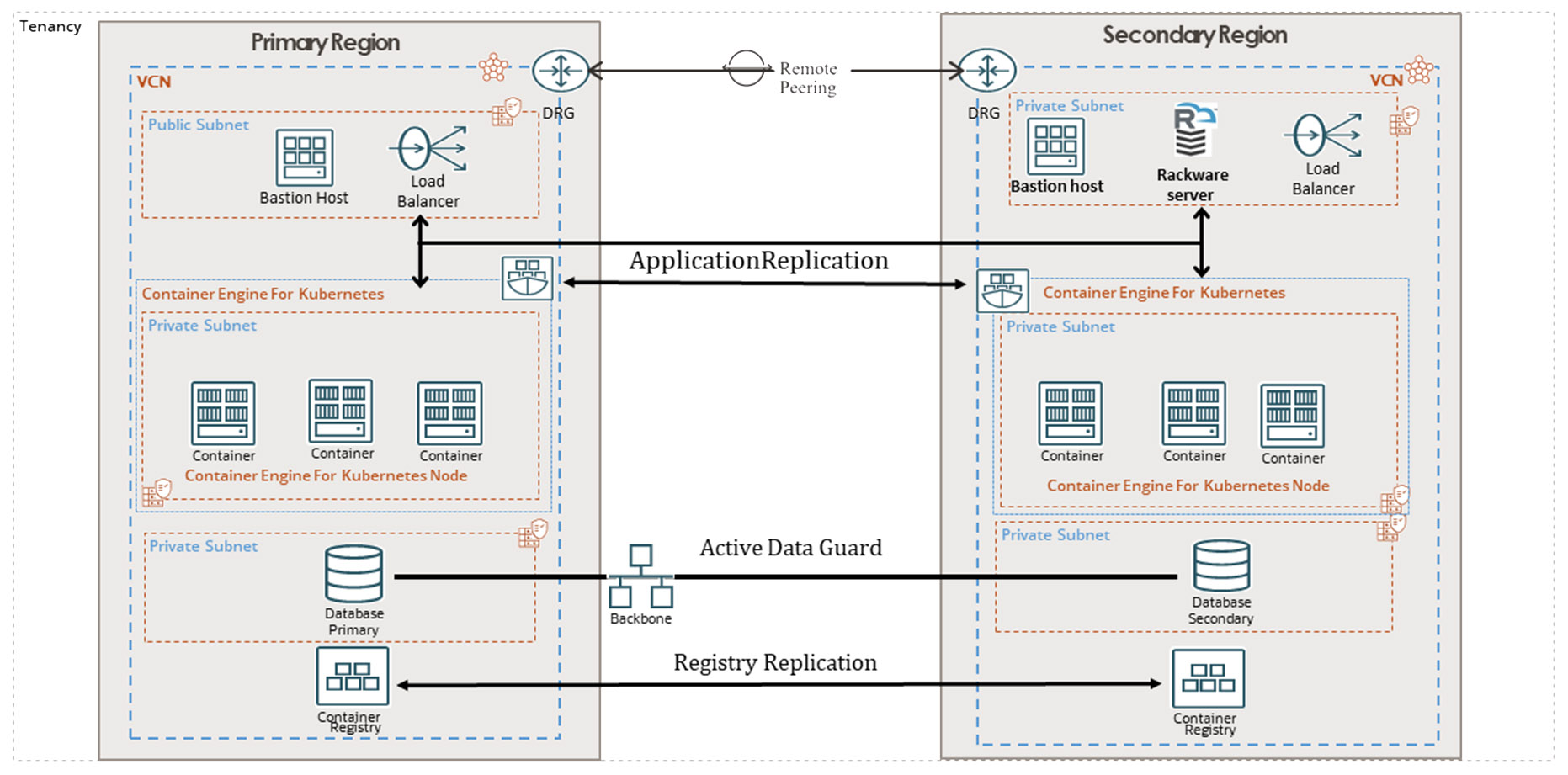The cloud capabilities meet specific requirements such as IaaS/PaaS for enterprises and this is crucial if any enterprise focuses on becoming cloud centralized. But this is only one side of the story. The other side is all about having a robust disaster recovery plan and cloud backup for enhanced data protection. And Oracle is proven to be the leader of having a reliable and most secured disaster recovery solution in case of unforeseen/unexpected disruptions.
And to safeguard your Oracle cloud infrastructure, this is where our Solution Architect, Raghavendra comes up with how RackWare SWIFT for OKE Disaster Recovery can be a potent solution for your cloud environment.
Oracle Container Engine for Kubernetes
Oracle Container Engine for Kubernetes (OKE) is a fully managed, scalable, and highly available service that you can use to deploy your containerized applications to the cloud. Use OKE when your development team wants to reliably build, deploy, and manage cloud-native applications. You specify the compute resources that your applications require, and OKE provisions them on Oracle Cloud Infrastructure in an existing OCI tenancy.
In today’s world ensuring the resilience and availability of your Kubernetes clusters is crucial. While Oracle Kubernetes Engine (OKE) provides a robust managed service, adding a Disaster Recovery (DR) layer using RackWare SWIFT can further protect your infrastructure from unexpected downtimes.
RackWare SWIFT mainly supports cross platform as well with this feature we can seamlessly move the applications from one container platform to another container platform. RackWare Swift helps to protect your stateful and stateless Kubernetes objects.
Architecture of RackWare SWIFT
This reference architecture describes how you can enable backup and disaster recovery between your OKE setups across regions. A standby region is configured to transfer OKE clusters in the event of a disaster. This disaster recovery strategy follows the active/passive model.

Why to Choose RackWare SWIFT for OKE?
Easy Set-up – One-click discovery of all cluster namespaces and applications. Then easily select your containerized applications to backup and all dependencies, including relevant Pods and data volumes will be backed up.
Delta Sync Engine – SWIFT provides a simple-to-use interface with a powerful policy engine that allows the user to configure Sync and Backup Policies for all Discovered clusters. Whether you are Migrating the Cluster, doing Backup or Disaster Recovery, SWIFT’s powerful Delta Sync Engine will keep your active and captured Clusters in Sync
Disaster Recovery/Backup – SWIFT provides two modes for Disaster Recovery. First is a live-sync mode where all clusters/applications are up-and running in a remote location, with SWIFT continuously syncing both Stateful and Stateless applications’ data between Source and Target. The second option allows the user to sync all data to SWIFT managed storage and recover all clusters/applications from storage in the event of a disaster, or for a test drill. This mode provides huge cost savings while still achieving outstanding RPO and RTO times.
Security – All data transfers using SWIFT are fully encrypted via SSH
Cost Efficiency: Reduces costs associated with traditional DR solutions.
Prerequisites
Before setting up RackWare SWIFT, ensure you have the following:
- Oracle Cloud Account: Access to Oracle Kubernetes Engine (OKE) with the necessary permissions.
- RackWare SWIFT Subscription: An active subscription to RackWare SWIFT.
- OCI CLI: Oracle Cloud Infrastructure Command Line Interface installed and configured.
- Kubernetes CLI (kubectl): Installed and configured to access your OKE clusters
Setting Up RackWare SWIFT for OKE
- Register the OKE Clusters
- Install RackWare SWIFT Agent
- Configure Backup Polices
- Create DR Plan and Replication
- Test the Replication
- Automate Failover
Considerations
Consider the following points when deploying this reference architecture.
- Sync: Namespaces need to be created on the secondary cluster before sync. Each sync job supports one-to-one namespace mapping. Before RackWare SWIFT can sync your OKE cluster to the secondary region, an OKE cluster must be created in the secondary region.
- Infrastructure: Before implementing the SWIFT product make sure Infrastructure is ready on DR region along with Network and Kubernetes Cluster
- Kubernetes Cluster Information: Notice that RackWare will not replicate node labels, node allocations, control plane definitions, or worker node properties. This means your pod topology, pod distribution, node selectors, and affinity settings need to be maintained manually in the secondary region
Implementing a disaster recovery solution for OKE using RackWare SWIFT enhances your infrastructure’s reliability and availability. By following the steps outlined above, you can ensure that your Kubernetes workloads are resilient and can quickly recover from unexpected disruptions.
For all queries, please write to:





